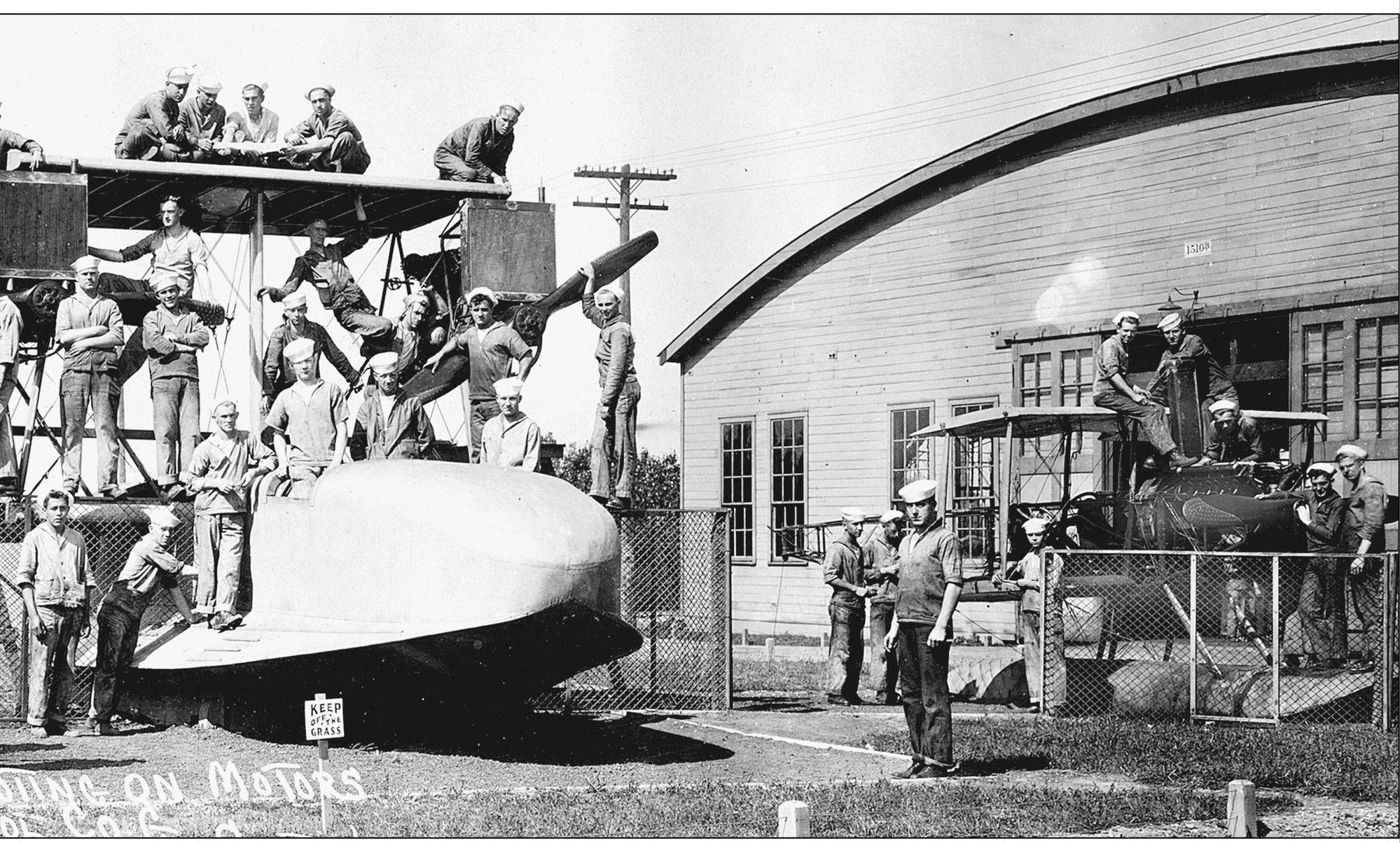One
IN THE BEGINNING
Although flying machines proved themselves during World War I, there remained a great deal of skepticism. In the same way many Americans could not see much of a future for the motorcar several decades earlier, a majority of navy brass could not envision a time when airplanes would be an asset to the fleet. The Naval Militia Act of 1920 ended the historic volunteer naval militias and called for the formation of Navy and Marine Corps Reserves. Rear Adm. William A. Moffat became the first chief of the Bureau of Aeronautics in 1921; with his enthusiastic support, reserve aviation programs were organized.
In September 1923, the United States NRAB Great Lakes, Illinois, was established under the command of Lt. Richard E. Byrd, U.S. Navy (later Admiral Byrd, of arctic exploration fame). The training program at Great Lakes primarily used seaplanes and, later, a few land-based aircraft. The program was poorly funded and would not have been possible at all during the Great Depression without the support and cooperation of the civilian community. P. K. Wrigley, head of Chicagos vast Wrigley empire, and other wealthy civilians donated planes to the Great Lakes program. Those who served in the reserve were primarily men who lived in the Chicago area; most of the pilots flew for commercial airlines. Drill pay for reservists was unknown in that era, and pilots often had to reach into their own pockets to pay to fuel their training planes.
As heavier and faster planes were designed and built, the short runway at Great Lakes was unable to accommodate the next generation of naval aircraft. An exhaustive survey was undertaken to determine which locations in the Chicago area might be suitable for relocation of the NRAB. On November 1, 1939, word was received at Great Lakes that the Navy Department had approved a lease on Glenviews Curtiss Reynolds Wright Airport.
Written on the back of the picture is, This aerial view shows the original location of (squadron) VN-16 RD-9 at Naval Training Center Great Lakes. The hangar can be seen left center in the photograph with concrete apron in front. The large structure is the aviation mechanics school. Remnants of old streets, sidewalks, and buildings of World War I vintage are in the visible surrounding area. Note the lone aircraft parked near the hangar. The photograph was originally owned by Charlie Swasas.
Pilots prepare for a training flight in these FBC-4 fighter/bombers. Note the sailor / mechanic (in the background) inspecting the gun mount. (Courtesy of Great Lakes Naval Museum.)
One aspect of training for Great Lakes aviation personnel was the parachute drill. (Courtesy of Great Lakes Naval Museum.)
The caption on this 1920 photograph indicates that the building on the right is the Machinist Mate School. The men of Company G are troubleshooting on motors.
This picture postcard scene from around the early 1930s shows the seaplane basin on the shore of Lake Michigan at Great Lakes Naval Training Center. (Courtesy of Great Lakes Naval Museum.)
(Courtesy of Great Lakes Naval Museum.)
Sailors tow an N3N seaplane out of Lake Michigan onto the beach at Great Lakes. (Courtesy of Great Lakes Naval Museum.)
On this roster of Great Lakes personnel, dated 1934, photograph owner Carl Garisso wrote, These people reflect the original personnel at Great Lakes who supported the squadrons which came out on weekends. We were called the Stationkeepers or Active Duty Personnel.


















